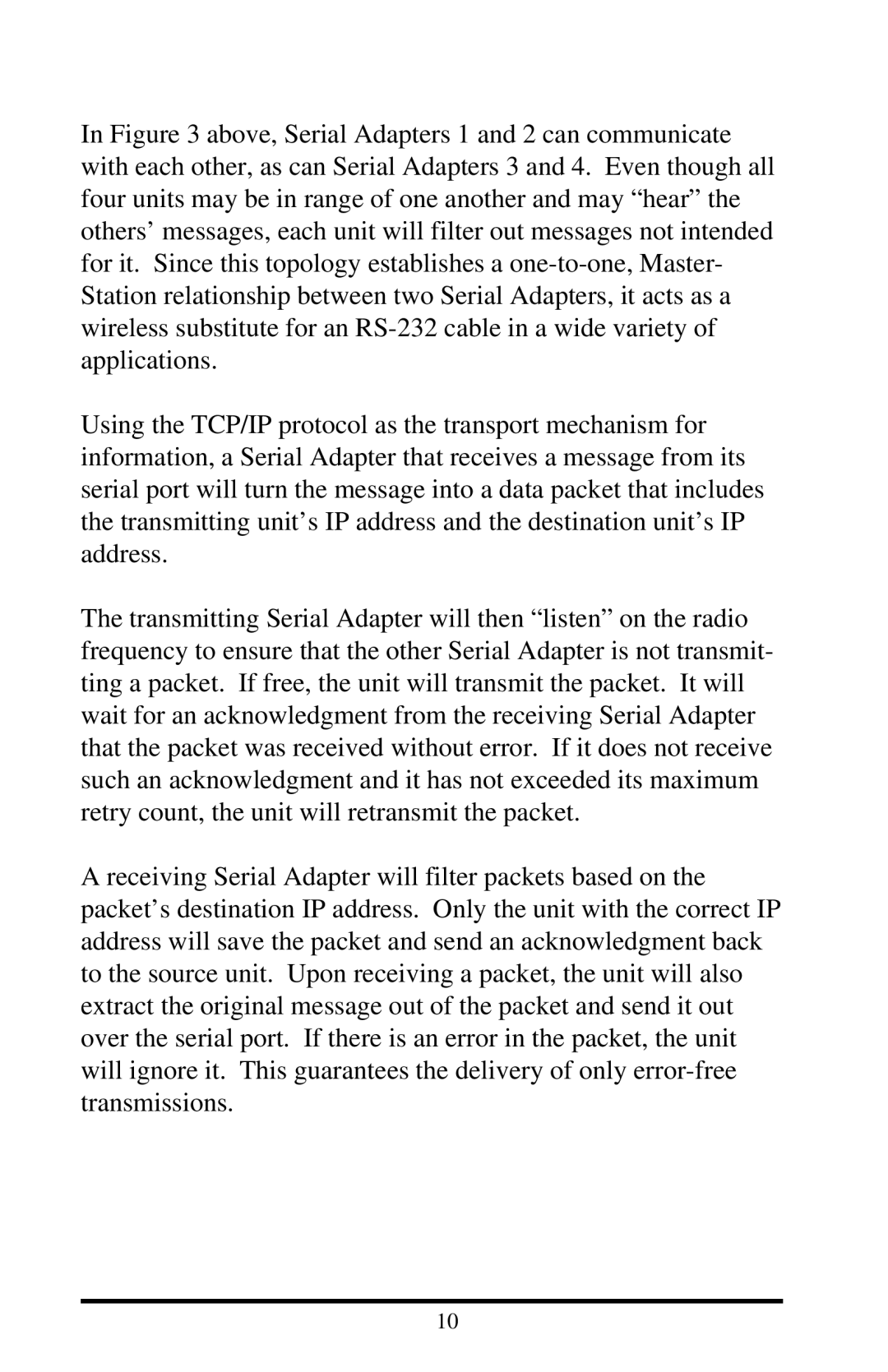In Figure 3 above, Serial Adapters 1 and 2 can communicate with each other, as can Serial Adapters 3 and 4. Even though all four units may be in range of one another and may “hear” the others’ messages, each unit will filter out messages not intended for it. Since this topology establishes a
Using the TCP/IP protocol as the transport mechanism for information, a Serial Adapter that receives a message from its serial port will turn the message into a data packet that includes the transmitting unit’s IP address and the destination unit’s IP address.
The transmitting Serial Adapter will then “listen” on the radio frequency to ensure that the other Serial Adapter is not transmit- ting a packet. If free, the unit will transmit the packet. It will wait for an acknowledgment from the receiving Serial Adapter that the packet was received without error. If it does not receive such an acknowledgment and it has not exceeded its maximum retry count, the unit will retransmit the packet.
A receiving Serial Adapter will filter packets based on the packet’s destination IP address. Only the unit with the correct IP address will save the packet and send an acknowledgment back to the source unit. Upon receiving a packet, the unit will also extract the original message out of the packet and send it out over the serial port. If there is an error in the packet, the unit will ignore it. This guarantees the delivery of only
10
